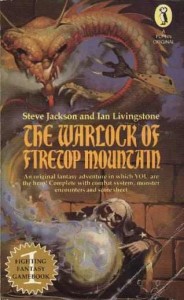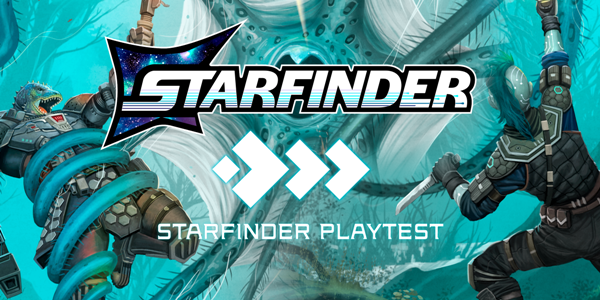Going it Alone
By The Warden

I have a theory on why roleplaying games struggle to gain any true recognition in popular culture: it’s a group activity. Not the players, but the characters. So many other forms of entertainment provide action, excitement, tension, and drama featuring a lone central protagonist taking on these troubles alone. It’s a flip from the average RPG highlighting the need for teamwork and camaraderie to overcome equally challenging dangers, defying the typical portrait of modern heroes. There are exceptions to the rule and I’m not indicting the RPG genre for any slights, simply acknowledging an idea out loud.
Many of my characters were created under the impression of being a formidable and awesome opponent on his own and never imagined as being part of a group. Even though every character will join a group within the first five minutes of a campaign, it’s a strange flaw in many of my past concepts and I’ve often thought it was because of my action heroes as a child in the 80s and 90s. Oh yeah, Stallone, Schwarzenegger, Norris, Van Damme, Seagal, and pretty much the entire cast of either Expendables film. They didn’t have partners. Even one of the most infamous buddy pictures of the age, Lethal Weapon, was basically Riggs (Mel Gibson) doing all the crazy stunts while Murtaugh (Danny Glover, of course) chased after him.
GAMEBOOKS: A NOVEL WAY TO PLAY
So it’s curious when I start thinking about solo gaming. Whether it’s a one-on-one session (GM and a single player) or going it alone with a gamebook such as the classic Fighting Fantasy series from Steve Jackson Games. Typically, solo games refer to the literal definition of solo and therefore goes to the gamebooks. Expanding on the classic style of Choose Your Own Adventures, these novels presented a story featuring a lone character — you! — trying to take the right path and conquer the dangers ahead through a combination of choices and dice rolls. Each series provided its own basic mechanics with players reading through the book in a constantly alternating direction and keeping track of health, treasure, and even mapping on a spare sheet of paper. There were even some official D&D gamebooks back in the day and Kobold Press (also known as Open Design) recently released a couple new samples using Pathfinder as its basis.
The popularity of these classics never truly waned and have adapted to current technology, as with the Blood of the Zombies release through print, iPad, and Android by Tin Man Games. Complete with music, animation, sound effects, and more, the experience is amplified as a near video game experience. Others have elected to take the concept one step further and build a more complex system, such as the upcoming RPG Adventurer: The Solo Roleplaying Game from the Adventure Games Guild.
While it’s plausible to compare gamebooks to traditional roleplaying games, they truly are different creatures. Unlike RPGs, gamebooks offer limited choices in comparison and any mechanics involved are fairly simple and effective. For example, in the aforementioned Adventurer, dice rolls are handled with a single d6 compared to a Difficulty number. Depending on the Difficulty and your ability score (i.e., Body, Mind, or Soul), you must roll a particular number or higher to achieve success. If your ability score and the Difficulty are a match, then you must roll a 4 or higher. If your ability score is twice as much as the Difficulty, you need only gain a 2 or more.
What’s interesting about gamebooks is the likely possibility of failure requiring you to try again. Similar to classic arcade games like Dragon’s Lair, the odds are slim you’ll make all the right choices along the way and you’ll have to learn from your “mistakes” before winning the game. It’s a game of trial and effort. It’s funny how you can actually fail reaching the end of a book this way and cheating offers nothing in the way of personal reward because the end of the story might not necessarily exist in the last few pages.
From a mechanical point of view, these games are built as a “quick fix” for hardcore roleplayers and old school gamers like us. It’s a chance to play on the bus ride to work or school, kill some time waiting for that meeting to start or while the rest of the family gets ready for church, or any other appropriate moment. Nearly every gamebook – to my knowledge – involves a pre-existing character and background and never carries over into the next book. There is no gamebook campaign… yet.
TAKING ON THE GM ALONE
Which brings us to the other side of the coin: single player vs. GM. Personally, I love dabbling in a couple of solo quests in-between sessions of a group campaign, whether it’s delving into a character’s personal history or branching off on a side quest when other players are unable to attend. It’s a chance for a player to shine and prove themselves in the face of dire threats and immediate danger, but tackling these thrills can be a bit tricky.
Many RPGs are built on the foundation of a group activity and requires adjustments to make a solo game work. Whether it’s modifying the challenges of a solo session (i.e., monsters) or altering the core classes (i.e., clerics), pulling off this style of play does require a more experienced hand. Some games are damn near impossible to run, such as the 4th edition of D&D, that unless you’re working with one or two specific options, it’s not worth the bother.
Some groups tackle this problem by allowing player-controlled minions, lackeys, or followers as back-up, healers, spare spellcasters, and unlucky decoys in a makeshift party. Others downplay the game’s challenges to single hit point monsters and dice rolls tailored to suit the class’ strengths. For example, many published solo quests are designed specifically for thieves, fighters, wizards, and what have you. In almost every case, the game is toned down to keep up with the need of a single character. Which is a shame because I’d love to see a game where the individual hero is ramped up to meet the challenges often shared by a group. Multiply their hit points, boost their defence by a couple of points, provide some extra spells, and let the hero kick some serious butt.
BUILDING GAMES FOR GROWN-UPS
Perhaps this is an angle future RPGs will consider in their designs. As adults, it gets harder and harder to find or start up a regular campaign and keep players coming week after week (or month after month, if need be). One of my bi-weekly Sunday groups just called it quits after two years spent struggling to keep a party together and it was finally too much for the DM to care any more. We have responsibilities trumping any desire to play and cannot invest the time like we used to in our youth. Building RPGs that can allow players to not only pop in and out but allow for an easy translation from group play to solo play. Or adapt on the fly where the number of players affects matters like character health and power for that session. It’s a logical step and mimics the players’ actions when they suddenly find themselves a man short at the last minute. After all, it’s easier to adjust the PCs than it is the adventure at times.
The sheer fact that we have RPGs designed for a single player speaks to the strength and admiration we have for these games – we’ll take any excuse we can to play some more and be dammed if something like attendance is going to stop us from playing tonight. Some may call it a pathetic addiction, others will think of it as deep appreciation. Whatever the reason for creating this monster, there’s no going back now. It’s alive. IT’S ALIVE!!!



